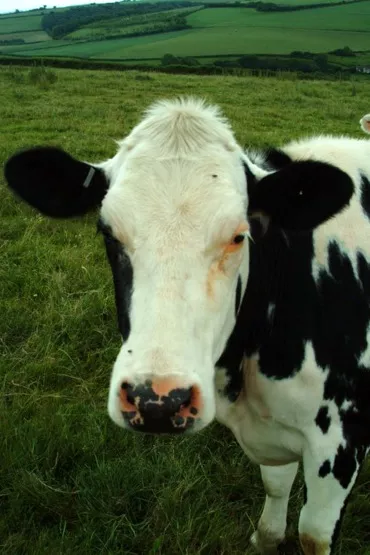Biological Risks

Livestock, as well as hundreds of fish and amphibians, are at great risk from water contamination. (Photo courtesy of freefoto.com)
Deep-well fracking involves the use of millions of gallons of water that must be extracted from one source and then disposed of into another. Often these sources are relatively small local streams and rivers. While the exact effects of water use during fracking on ecosystems are not fully understood, there are many reasons to believe they could be detrimental.
To begin, extracting anywhere from 2 to 8 million gallons of water from any stream or river could have drastic effects due to changes in water levels and the potential uptake of water-living organisms. In addition, it can take hundreds of tankers multiple trips to move all of that water. These tankers could erode the riverbanks, pollute the water, and disturb the local wildlife.
After being used for the actual gas extraction, up to 1 million gallons of what is now called flowback must be hauled away from the drilling site and disposed of. This used water is known to contain thousands of pounds of as many as 344 different chemicals, most of which can readily move through water and have known health risks. These health risks run from skin and respiratory irritation to cancerous and mutagenic effects.
These human health risks also apply to wildlife and microorganisms living in water bodies. There is currently an ongoing investigation of a mass die-off on a 38-mile stretch of the previously pristine Dunkard Creek along the boarder of Pennsylvania and West Virginia. According to Protect Our Waters, it is believed that up to 8,000 gallons of fracking fluid may have been discharged in an abandoned mine, where it then traveled through a series of underground passages ending up in the creek. The consequences of this dumping has been the death of over 10,000 fish plus amphibians, mussels, and aquatic insects; 161 species in total, some of which are candidates for being federally listed as endangered.
In addition to being potentially lethal in even very small doses, the chemicals involved may also build up in streams and rivers and their banks. Through a process called bioaccumulation, plants and algae can uptake chemicals and store them. If these plants are then eaten or die, they can release these chemicals in larger concentrations than were present at any one moment. For this reason, methods such as dilution prove ineffective for disposal of dangerous chemicals. It is also for this reason that many of these affected waters may never recover.
Wastewater may also spill and migrate into groundwater supplies. This groundwater often then gets into soils and animal and livestock drinking water. So far there have been many reports across the country of cattle, goats, and pigs experiencing birth defects, unexplained illnesses, or death near well sites. There are also reports of companies spraying the flowback onto roads to limit dust, which could spread these chemicals into local streams and plants and expose many domestic and wild animals.
As of right now, drilling companies often dispose of their wastewater in a public treatment plant. However, these plants are not set up to remove the vast amounts of contaminants found in fracking flowback. Therefore, it is possible for millions of gallons of unsafe water to be released into rivers or the oceans. Because of this risk, fracking should be stopped until the effects of their wastewater are better understood and controlled.



